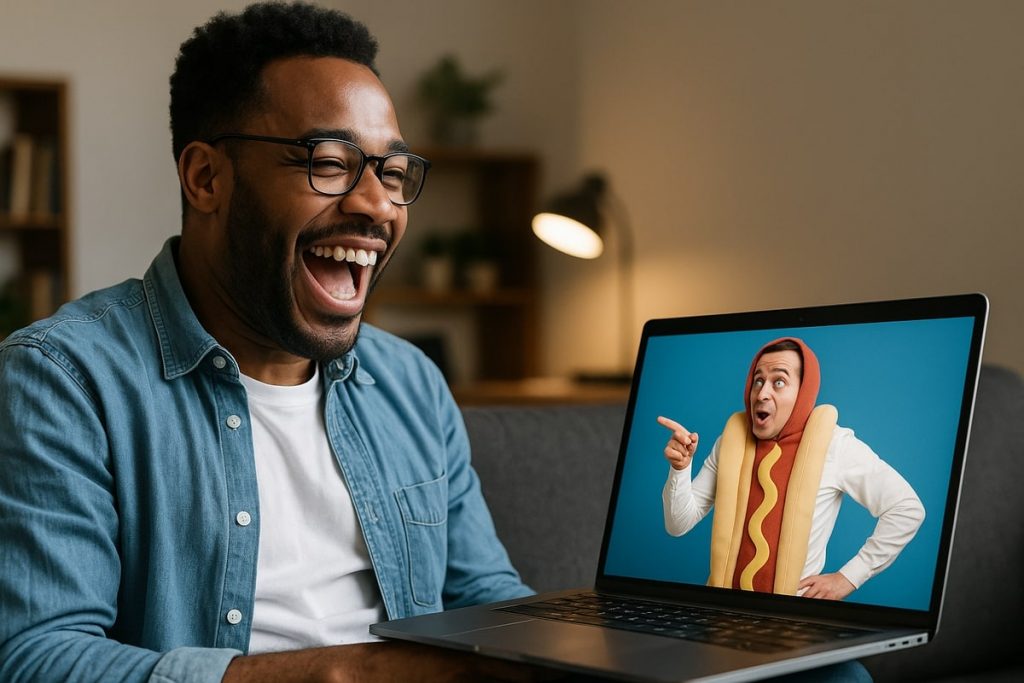Everyone wants to be an expert.
It’s a sign of being distinguished in a field or industry.
It lends legitimacy and authenticity to your business.
For your bottom line, being an expert brings leads directly to your door – they seek you out.
Let’s face it: Expert status is one of the most highly sought-after and valuable identifiers in business.
But this post isn’t about how to become an expert.
Instead, it’s about taking advice from those distinguished in the field of Facebook ads.
Because by emulating those that are excelling in Facebook marketing, you have the opportunity to mimic their success.
We’re not suggesting you copy everything these Facebook ad experts do.
Instead, take this advice and tailor it for your brand and objectives.
Then, sit back (no, not really: you still need to optimize! Optimize! Optimize!) and watch how expert advice combined with your marketing know-how can lead to success.
Here’s what top Facebook advertising experts have to say about ad design.
1. A/B Test Your CTAs
The best way to drive people to convert from your Facebook ads: Tell them to take action.
A CTA is just that.
And not having one can greatly harm your campaign.
In fact, failing to include a CTA button when designing a Facebook ad can lead to a 2.5X higher cost-per-lead.
But it’s not just about including a call to action.
It’s also about selecting the right one.
Choosing a CTA for Your Facebook Ads
The first thing to keep in mind when selecting a CTA is what your campaign objective is.
Let’s say in this case you select “Lead Generation” in order to drive people to give their information and sign up for your newsletter.
Of the CTA options then available to you, relevant ones can include:
- Sign Up
- Learn More
- Subscribe
Then, it’s about designing your Facebook ad so it relates to the CTA.
For example, this Facebook ad design directly calls out visitors to “Sign up today for Free”.
That’s then reiterated by the CTA button to “Sign Up”.
See how this works?
Why Test Your CTAs
Clearly, changing your CTA button also has an impact on the overall Facebook design.
Your headline and text will likely change to support what your call to action is.
With a design change, it’s important to see how that impacts performance.
And that’s why Facebook ads experts like Katya Ladryda, BBM Subject Matter Expert suggest A/B testing CTAs.
She A/B tested CTAs for a Facebook ad leading to an e-book download in order to see which drove higher quality leads.
Doing so allowed her to optimize for a lower CPC with higher returns.
2. Video, Video, Video!
There’s no denying it: we’re in an age where video rules all.
Looking for the proof?
Check out these quick stats on Facebook video ads:
- People are 85% more likely to purchase a product after watching a video.
- 4X more people would prefer to watch a video than read about a product or service.
- Video ads earned 20% more clicks than those with static images
- Facebook videos have a 168% higher interaction rate than YouTube
There you have it.
So, what about some Facebook ad design inspiration for your next video campaign?
How the Experts Use Video in Facebook Ads
Kristina Simonson, Senior Digital Marketing Specialist for WordStream leveraged video for a Valentine’s Day-themed launch of a webinar.
She used an animated video that was in line with the holiday while looking eye-catching and compelling.
Combined with targeting interested audiences, the campaign achieved a 35% conversion rate.
When Madeleine Xavier, Director of Demand Generation at Instapage ran her Facebook ad campaign using video, she also saw drastically improved results.
She compared Facebook designs that used video vs. images, and also captions and icons.
What she found was that
“. . .not only did video drive better performance against conversion metrics but in addition, using captions in the video and icons in the text both resulted in higher conversion rates and more efficient leads.”
Specifically, video Facebook ads had a 48% lower CPA.
And those with captions had a 40% lower CPA.
Top Tips for Designing a Video Facebook Ad
A few best practices to keep in mind for video Facebook ads include the following:
Use subtitles/closed captions
85% of videos are watched with the sound off on Facebook.
Keep that in mind as you design your ad by including on-screen text and captions.
Keep the video short
Facebook advertising expert Heidi Buhl from Closed Loop tested 15- vs. 30-second mobile-optimized video ads.
What she discovered was that the 15-second Facebook ads had a 36% increase in CTR and 36% decrease in CPA.
Crop to a 1:1 aspect ratio
This tip comes from Taktical Digital’s own Facebook ad expert, Dane Kragness.
A 1:1 ratio translates well over to Instagram, too, making cross-platform video ads even easier to launch.
And, according to Kragness,
“Facebook’s algorithm works best when the same ad runs on Facebook and Instagram simultaneously, so make sure your creative assets work for both platforms.”
Additionally:
“1:1 images and videos stand out by taking up more on-screen real estate.”
3. Try Carousel Format
When it comes to choosing a format for your Facebook ad design, carousel is among the most effective.
Take it from Facebook advertising expert Marion Barel, Global Digital Marketing Manager at Trustpilot.
She used Carousel ads to promote a webinar.
The results?
Decrease of 50% in terms of cost-per-registration, 16.74% conversion rate, and 5X better performance than mobile static image ads.
Top Benefits of Carousel Ads
The Carousel format is a top choice among Facebook ad experts for multiple reasons.
Here are just a couple of reasons why.
Reduce CPC
On average, cost-per-click is 20-30% lower with a Carousel ad.
Additionally, using this format when designing a Facebook ad leads to a 30-50% decrease in cost-per-conversion.
Wayfair is a great example that proves the effectiveness of this type of Facebook design.
Their Carousel ads promoted best-selling products from different categories.
They were able to advertise multiple products at once while targeting high-value customers.
The results were 88% higher CTR and 20% lower CPA than traditional Facebook ad designs.
Consider it like getting more bang for your buck.
You’re able to upload a maximum of 10 images to a Carousel Facebook ad design.
This means you have 10 separate opportunities (each can direct to a different webpage) for conversion for the cost of a single ad set.
Effective for Any Business Objective
Regardless of the objective of your Facebook ad campaign, Carousel can drive results.
Looking to drive conversions to multiple products?
Create a Carousel ad that highlights a series of products, with each leading to a different product page.
Want to show people how to use your product or service?
Create a Carousel ad that shows someone using your product or explain how to use it.
Additionally, the Carousel format is a great Facebook ad design to provide an in-depth look at what you’re offering.
You can highlight a different feature for each image and use the same CTA to drive people to the right product or landing page. On top of that, incorporating regular landing page optimization into your strategy will help you maximize your campaign’s overall performance.
Whether it’s for conversions, lead generation, brand awareness, or basically anything else, Carousel ads are a good choice.
4. Consider Best Design Practices
It can never be said enough that keeping up to date with best practices for Facebook ad design is essential.
These are constantly changing as the platform updates, so it’s important to check in frequently regarding new techniques, formats, and ideas.
Here’re the latest suggestions from the Facebook advertising experts themselves.
Leverage Color Psychology
Think about how a user scrolls through their Facebook feed, both on mobile and desktop.
They’re doing just that: scrolling.
So, using eye-popping colors and carefully considering color psychology can have a huge impact when designing a Facebook ad.
In fact, studies have shown that just adding a colored border around a Facebook ad can increase CTR 2X.
Consider the following piece of Facebook ad design inspiration from Kragness:
“Draw attention to your ad by using colors that contrast with the Facebook news feed. Otherwise, potential customers may scroll by your ad without a second glance.”
To determine exactly what colors you should be using, think about your industry, your audience, and what your customers expect, while also keeping in mind what stands out.
Also, take a peek at what your competitors are doing.
Focus More on the Creative Than the Copy
This Facebook design tip doesn’t give you an excuse to ignore your headline and caption entirely.
These still matter, and are a key way of grabbing viewer attention.
However, it’s more important than ever that your copy is concise and that your ad creative tells the story for you.
Why?
Well, Facebook recently changed their formatting rules for Mobile News Feed posts.
Now, the aspect ratio of mobile posts is 4:5 instead of 2:3.
As a result, the total number of lines of visible text above the ad creative is 3, whereas it was previously 7 lines.
In order to read more than 3 lines, users will have to click into the post.
So, what this means according to Kragness:
“Now, you’ll need to get your message across without being verbose.”
Try strategies that can capture a user’s attention without requiring a full story.
Maybe that means establishing urgency in just one line with phrases like “Hurry!” and “Last chance!’.
Or, maybe that means relying on creative that can tell a longer story for you, like video or Carousel Facebook designs.
5. Appeal to Emotions
People don’t buy based purely on rationality.
Instead, many purchasing decisions are made based on emotion.
In fact, according to recent research, as many as 95% of customers may decide to buy something due to subconscious reasoning.
Therefore, it’s incredibly important to appeal to the emotional side of the customer in your Facebook ad design.
Luckily, it’s been shown that there are really only four major emotions at play:
- Happy
- Sad
- Afraid/surprised
- Angry/disgusted
With this in mind, have your Facebook design target one of these emotions.
Facebook ad expert Ruben Aguirre, Founder/Funbassador of PixelMark gives a good example of how to do this.
He created a campaign for a birth center that was targeted towards expectant mothers.
“The ad content and CTA hinged on pathos and appealed to a desire for a better birth outcome. The ad was well-targeted and relatable and gained a ton of social proof (comments, likes, and shares), which gave it an extra boost. In the end, it had an 800% increase in engagement!”
Check out some additional ways to target emotion when designing your Facebook ad.
Facebook Ad Design Inspiration for Emotional Content
One of the most common yet effective emotions to tap into with Facebook ad design is “FOMO”.
The fear of missing out inspires many a purchase (60% of millenials admit to it), whether through urgency, social proof, or other means.
User-generated content is an excellent tool to leverage in your Facebook design.
Using things like customer testimonials can establish legitimacy for your product or service.
Additionally, it inspires FOMO in people as they wish to experience this amazing result for themselves.
Another reliable way to inspire FOMO with Facebook ad design: Set a deadline.
Run a campaign with a special sale or promotion that is only running for a limited time.
Refresh the ad creative throughout the duration of the promotion to remind people of the remaining time and inspire them to make a purchase.
There are many ways to inspire or tap into emotions with your Facebook ads.
Whether with relatable ad creative and copy or ones that inspire urgency and FOMO, appealing to your customers’ subsconscious is a key to success.
Be the Facebook Design Expert
So, you’ve heard what the Facebook advertising experts have to say on a few topics regarding ad design.
Now, it’s your turn.
Their advice is excellent inspiration for your own Facebook ad design.
However, by no means does it represent the rules you must follow.
Adapt their suggestions for your own campaign, integrate the design best practices that work for your audience, and tweak/optimize to achieve the best possible results.








